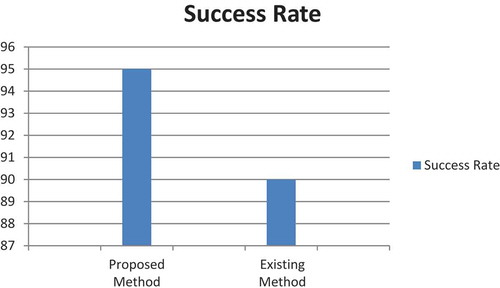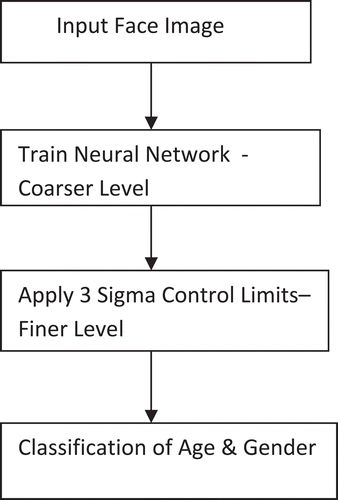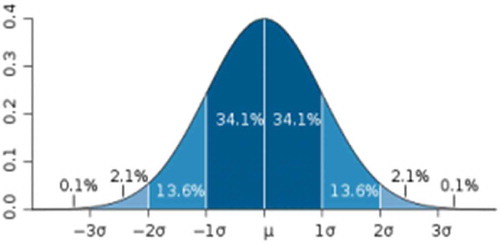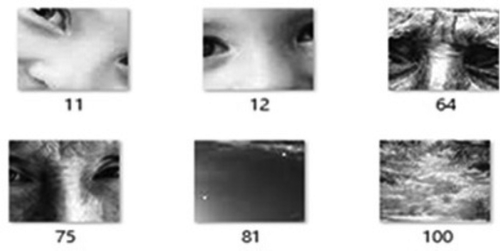ABSTRACT
A person’s face provides a lot of information such as age, gender, and identity. Faces play an important role in the estimation/prediction of the age and gender of persons, just by looking at their face. Perceiving human faces and modeling the distinctive features of human faces that contribute most toward face recognition are some of the challenges faced by computer vision and psychophysics researchers. There are many methods have been proposed in the literature for the facial features for age and gender classification. In this research, an attempt is made to classify human age and gender using feed forward propagation neural networks in coarser level. Further final classification is done using 3-sigma control limits in finer level. Proposed approach efficiently classifies three age groups including children, middle-aged adults, and old-aged adults. Similarly two gender groups classified into male and female by the proposed method.The performance of the system is further improved by employing multiple hierarchical decision using three sigma control limits applied on the output of the neural network classifier. The mean and standard deviation has been considered on the output generated from the neural network classifier, and three sigma control limits has been applied to define the range of values for the specific category of age and gender. The efficiency of the system is demonstrated through the experimental results using benchmark database images.
Introduction
Human facial image processing has been an active and interesting research issue for years. Since human faces provide a lot of information, many topics have drawn lots of attentions and thus have been studied intensively. In the past several years, various feature extraction and pattern classification methods have been developed for age and gender classification. Emerging applications of computer vision and pattern recognition in mobile devices and networked computing require the development of resource limited algorithms. Perceived age and gender classification is a research topic with a high application potential in areas such as surveillance, face recognition, video indexing, and dynamic marketing surveys.
Age and gender classification is important visual tasks for human beings, such as many social interactions critically depend on the correct age and gender perception. As visual surveillance and human–computer interaction technologies evolve, computer vision systems for age and gender classification plays an increasing important role in our lives. Age and gender classification is arguably one of the more important visual tasks for an extremely social animal like us humans many social interactions critically depend on the correct gender perception of the parties involved. Arguably, visual information from human faces provides one of the more important sources of information for age and gender classification. Not surprisingly, thus, that a very large number of psychophysical studies has investigated age and gender classification from face perception in humans.
Automatic human facial expression recognition, human mood analysis system are the thrust research area in video surveillance and law enforcement applications as a prerequisite for face recognition. Until now much research work has been done on detecting the human faces and recognition of faces but less effort is made for human age and gender prediction.
A neural network usually involves a large number of processors operating in parallel, each with its own small sphere of knowledge and access to data in its local memory. Typically, a neural network is initially “trained” or fed large amounts of data and rules about data relationships. A program can then tell the network how to behave in response to an external stimulus or can initiate activity on its own. In feed forward systems, learned relationships about data can “feed forward” to higher layers of knowledge. Neural networks can also learn temporal concepts and have been widely used in signal processing and time series analysis.
This paper proposes an effective method for human age and gender prediction/classification from facial images. Here, the classification of the facial images is done at two levels, namely,
Coarser level
Finer level
In the coarser level, the facial images are classified automatically using neural network. Final classification is done in finer level to improve the detection rate effectively. Proposed algorithm has been implemented to classify age groups into children, middle aged people and old-aged people and classify gender into male and female using feed-forward ANN.
The rest of this paper is being organized as follows. Section “Literature survey” describes about the literature survey. Section “Proposed methodology” presents the proposed methodology. Section “Proposed algorithm” presents the proposed algorithm. Section “Experimental results” gives the experimental results. Finally, the paper concludes with “Conclusions” section.
Literature survey
Age and gender classification is one of the promising research areas since the couple of decades. Many of the researchers developed hundreds of algorithms in this area of research and got success. However, some of these methods are computationally expensive and also complex. Ai and Wei (Citation2009) proposed a method face gender classification on consumer images in a multiethnic environment. In this approach, the classification of the faces is done on facial features. Bekios-Calfa et al. (Citation2011a) invented an algorithm revisiting linear discriminant techniques in gender recognition, that recognize the gender of the person. Huang et al. (Citation2009) proposed a methodology on gender recognition with face images based on PARCONE mode. Chu et al. (Citation2010) introduced a method for identifying gender from unaligned facial images by set classification. Geng et al. (Citation2007) introduced an algorithm of automatic age estimation based on facial aging patterns. GudongGuo et al. (Citation2008) defined a problem based on image-based human age estimation by manifold learning and locally adjusted robust regression. Hayashi et al. (Citation2010) developed a system on age and gender estimation from facial image processing. Tin (Citation2012a), given a solution to classify the gender based on images called Perceived Gender Classification from Face Images. Tin (Citation2012b), given a method Subjective age prediction of face images using PCA. Horng et al. (Citation2001) defined a methodology on classification of age groups based on facial features. Suo et al. (Citation2010) developed a model on compositional and dynamic model for face aging. Their study was based on geometric ratios and skin wrinkle analysis. Their method was tested on a database of only 47 high resolution face images containing babies, young and middle aged adults. They reported 100% classification accuracy on these data.
Zheng and Lu (Citation2011) given an approach for support vector machine classifier with automatic confidence and its application to gender classification, which classifies the gender based on SVM. Bekios-Calfa et al. (Citation2011b) developed a methodology which describes revisiting linear discriminant techniques in gender recognition. Kirby and Sirovich (Citation1990) introduced a criteria for application of the KL procedure for the characterization of human faces. Kwon and da Vitoria Lobo (Citation1993) introduced a technique for locating facial features for age classification. Kwon and da Vitoria Lobo (Luu et al. Citation2010), 1994, proposed an experiment for age classification from facial images. Lanitis, Draganova, and Christodoulou (Citation2004) did a survey for comparing different classifiers for automatic age estimation. Looney (Citation1997) gave an approach on pattern recognition using neural networks. Luu et al. (Citation2010), adopted an algorithm on spectral regression based age determination. Mallikarjuna Rao et al. (Citation2009), 1994, proposed an algorithm on methodological approach for machine based expression and gender classification.
Moghaddam and Yang (Citation2002) developed an algorithm for learning gender with support faces. Roberts and Bruce (Citation1998) defined an algorithm of feature saliency in judging the sex and familiarity of faces. Iga et al. (Citation2003), 1998 described a problem on gender and age estimation system from face images. Sebe et al. (Citation2004) explored an approach toward authentic emotion recognition. Tian et al. (Citation2002) prepared a methodology for evaluation of Gabor wavelet-based facial action unit recognition in image sequences of increasing complexity. O’Toole et al. (Citation1998), developed an application for the perception of face gender: the role of stimulus structure in recognition and classification. Horng et al. (Citation2001) prepared a methodology for classification of age groups based on facial features. Yamaguchi et al. (Citation1995) developed an approach for the Judgment of gender through facial parts. Yuille, Cohen, and Hallinan (Citation1998) extracted an algorithm for Facial feature extraction from faces using deformable templates. Zheng and Lu (Citation2011) introduced a mechanism for the support vector machine classifier with automatic confidence and its application to gender classification, which classifies the human gender based on facial features extracted using SVM Classifier. Zhu and Cutu, explained an approach to face detection using half-face templates.
In this paper, three categories of age groups viz. children, middle age, and old age are considered. An algorithm has been proposed to predict ages or categorization of the ages of the different people using neural network as a classification tool. The accuracy of predicting these three age groups in any of the image is more compared to the above methodologies proposed by different researchers. This implementation is not limited to a single database, but also can be applied to different databases and also the images which can be downloaded from the internet.
Face database
The proposed methodology is experimented on database of the faces of people with different age groups viz. children, middle, and old age people, and genders classified into male and female. Here, JAFFE database has been considered for the experiments. Along with the JAFFE database, own image database has been developed by taking the pictures from the internet. There are 1000 grayscale facial images in this database. Among 1000 facial images, 700 images are used as Training dataset and remaining are considered for testing purpose. Each image is normalized to a size of 64 × 64 dimensions.
shows the facial database of the persons of different age groups and gender.
Proposed methodology
This paper proposes an effective method for human gender and age prediction/classification from the given facial images. shows the diagrammatic representation of the steps followed in the proposed methodology.
In this proposed methodology, instead of giving whole 4096 (64 × 64) neurons into the neural network, the mean of each of the image will be given as input to the neural network. Mean of each image is represented by 64 standard values I as shown in Equation (1).
Coarser level
In the coarser level, neural network classifies the faces based on the different age and gender. This outcome cannot be used as a conclusion as there may be the chances of misdetection. To make final classification, finer level is proposed to reduce the misdetection rate and improve the success rate of detection.
The output of the NN classifier is a standard value that predicts the age and gender of a person in the coarser level. This can be represented by
where
represents the predicted age and gender of a person.
contains a value either
child,
middle,
old,
male,
female that represents the predicted age and gender of a person’s face at the coarser level.
ƑƑ: function that represents the simulation of the neural network.
N: vector that represents the trained value in the neural network.
I: matrix that represents the testing image.
The output generated in the coarser level, from the standard classifier ANN cannot be considered as the final output. It is not possible to rely on the output that is generated by the ANN since the conclusion should not be dependent on standard classifier, as objective and contribution of this research is multiple level filtration/classification of different categories of images. Final decision is done in Finer Level.
Finer level
Based on the output generated from the coarser level, again the classification is done in the finer level by applying three sigma control limits on neural network. The application of three sigma control limits on neural network is so efficient that, it can classify the data with greater discrimination.
Three sigma controls cover more than 90% of the population of the dataset under consideration for decision making. shows control limits that describe how data are dispersed around their averages.
Three-sigma control limits are determined by their spread around the mean using Equations (2) and (3).
where and
are the lower limit and upper limit of male faces, respectively.
: mean of intensity values of male faces.
: standard deviations of male faces.
The mean of male face images are determined using Equation (4)
where represents the predicted gender of male faces obtained in coarser level.
n is the number of male faces.
The standard deviation of male face images is determined using Equation (5):
Similarly, and
are determined for female faces. The reasonable threshold value is empirically determined by considering the face images of the database. The mean
and
of female images are also determined using the similar equations given in Equations (4) and (5).
Similarly, and
are determined for children faces. The reasonable threshold value is empirically determined by considering the face images of the database. The mean and standard deviation
and
of children images are also determined using the similar equations given in Equations (4) and (5).
Similarly, and
and
and
for middle aged and old aged faces are also determined using three sigma control limits. Further, mean and standard deviation of middle aged and old aged faces are represented by
and
and
and
.
In testing the query image, gender and age is determined using Equation (1) as coarser level. The final decision on gender and age is determined using Equations (6a) and (6b), respectively, as finer level.
The experimental results of prediction of gender and age are shown in .
Proposed algorithm
Proposed algorithm for gender prediction from the given image is as given below:
Input: query face I
Output: determine gender, i.e. male or female
Step 1: Input all n face images to train the neural network and query image I.
Step 2: Set the target T for the classification of two gender categories and three age categories.
Step 3: Train the neural network N.
Step 4: Determine the male gender class in coarser level using the equation
Step 5: Determine the male gender class in finer level by three-sigma control limits using the equation
where are lower and upper limit controls determined using the equation
where mean and standard deviation
Step 6: Repeat the step 1–5 for female gender, children age, middle age and old age classes.
Step 6: Based on the range to which value belongs in finer level, the conclusion can be drawn that, the test image belongs to that specific class of gender and age.
Experimental results
The experimental results show the efficiency of the proposed Algorithm. In the testing phase, among 300 images, the combination of male and female of different age groups are taken. Thus, the success rate for the faces with different age and gender groups are 95%. The average recognition time of each test image is 0.30 s on a Pentium Quad Core processor with 2 GB RAM.
However, proposed method fails to detect the side-view faces, occluded faces and partial face images. This is due to the fact that the proposed model is constrained to detect only the frontal view face.
Our proposed method is compared with the method (Hayashi et al. Citation2010) and perform better success rate as shown in .
Figure 5. Comparison of proposed method with other model (Hayashi et al. Citation2010) for age and gender classification.

Conclusions and discussion
In this paper, a fast and efficient human gender and age classification system is proposed to classify a facial image into different gender groups and different age groups using feed forward neural network in coarser level. The final decision is made by employing validation based on three sigma control limits in the finer level. The proposed method is better in terms of speed and accuracy. Single frontal human faces with two gender groups and with three different age groups are detected successfully with success rate of 95%.
In future studies, misclassifications are reduced by using fuzzy logic approach for further improvement in the proposed system so that it becomes more pertinent to the design of a real-time video surveillance system.
Additional information
Notes on contributors
M. R. Dileep
Mr. M. R. Dileep is currently working as Asst. Professor in the Dept. of Computer Science, St. Aloysius College, Mangaluru, Karnataka, India. He has 5 years of experience in various capacities such as Teaching, Administration and Research. Research interest includes Digital Image Processing, Neural Networks, Fuzzy Interface Systems, Database Applications, Pattern Recognition, Software Engineering, Data Mining and so on. He has presented number of research papers in National and International Conferences and published number of research papers in the reputed International Journals including SCOPUS indexed Journals and IEEE Xplor Digital Library, which are freely available online. He has Completed Master of Computer Applications (MCA) from Visvesvaraya Technological University, Belgaum, Karnataka, in the year 2013.
Dr. Ajit Danti is currently working as Director and Professor in the Department of Computer Applications, Jawaharlal Nehru National College of Engineering, Shimoga, Karnataka, India. He has 22 years of experience in various capacities such as Teaching, Administration and Research. Research interests include Image Processing, Pattern Recognition and Computer Vision. He has published more than 35 research papers in the International Journals and Conferences. He has authored two books published by Advance Robotics International, Austria (AU) and Lambert Academic Publishing, German which are freely available online. He has Completed Ph.D. degree from Gulbarga University in the field of Human Face Detection and Recognition in the year 2006. He has completed Masters Degree in Computer Management from Shivaji University, Maharashtra in the year 1991 and M.Tech. from KSOU, Mysore in the year 2011 and Bachelor of Engineering from Bangalore University in the year 1988.
References
- Ai, H., and G. Wei. 2009. Face gender classification onconsumer images in a multiethnic environment. Proceeding Conference on Advances in Biometrics.
- Bekios-Calfa, J., J. M. Buenaposada, and L. Baumela. 2011a. Revisiting linear discriminant techniques in genderrecognition. IEEE Transactions on Pattern Analysis and Machine Intelligence 33 (4).
- Bekios-Calfa, J., J. M. Buenaposada, and L. Baumela. 2011b. Revisiting linear discriminant tehcniques in gender recognition. IEEE Transactions on Pattern Analysis and Machine Intelligence 33 (4, April):858–64. doi:10.1109/TPAMI.2010.208.
- Chu, W. S., C. Rong, and C. Song Chen. 2010. Identifying gender from unaligned facial images by set classification. In Proceeding of 20th IEEE International Conference on Pattern Recognition, 2636–739.
- Geng, X., Z. Zhou, and K. Smith-Miles. 2007. Automatic age estimation based on facial aging patterns. IEEE Transactions Pattern Analysis and Machine Intelligence 29 (12):2234–40. doi:10.1109/TPAMI.2007.70733.
- Gonzalez, R. C., and R. E. Woods. 2008. Digital image processing. 3rd ed. Pearson Education. Gonzalez R.C, Woods R.E and Eddins L.,” Digital Image Processing Using MATLAB”, Pearson Education
- GudongGuo, Y., F. R. Dyer, and T. S. Huang. 2008. Image-based human age estimation by manifold learning and locally adjusted robust regression. IEEE Transaction on Image Processing 17.
- Hayashi, J., M. Yasumoto, H. Ito, Y. Niwa, and H. Koshimizu. 2010. Age and gender estimation from facial image processing. in Proc. of the 41 st SICE Annual Conference, 13–18.
- Horng, W.-B., C.-P. Lee, and C.-W. Chen. 2001. Classification of age groups based on facial features. Tamkang Journal of Science and Engineering 4 (3):183–92.
- Huang, C., W. Pan, and S. Lin. 2009. Gender recognition with face images based on PARCONE mode. In Proc. Of the Second Symposium International Computer Science and Computational technology (ISCSCT), 222–26.
- Iga, R., K. Izumi, H. Hayashi, G. Fukano, and T. Ohtani. 2003. A gender and age estimation system from face images. In SICE Annual Conference in Fukui, August 4–6.
- Kirby, M., and L. Sirovich. 1990. Application of the KL procedure for the characterization of human faces. IEEE Transactions Pattern Analysis and Machine Intelligence 12 (1):103–08. doi:10.1109/34.41390.
- Kwon, Y. H., and N. da Vitoria Lobo. 1993. Locating facial features for age classification. In Proceedings of SPIE- The International Society for Optical Engineering Conference, 62–72.
- Lanitis, C., C. Draganova, and C. Christodoulou. 2004. Comparing different classifiers for automatic age estimation. IEEE Transactions on Systems Man and Cybernetics, Part B 34 (1):621–28. doi:10.1109/TSMCB.2003.817091.
- Looney, C. G. 1997. Pattern recognition using neural networks. New York, U. S. A.: Oxford University Press.
- Luu, K., T. Dai Bui, Y. C. Suen, and K. Ricanek Jr. 2010. Spectral regression based age determination.
- Mallikarjuna Rao, G., G. R. Babu, G. V. Kumari, and N. K. Chaitanya. 2009. Methodological approach for machine based expression and gender classification. IEEE International Advance Computing Conference, 1369–74.
- Moghaddam, B., and M. H. Yang. 2002. Learning gender with support faces. IEEE Transactions Pattern Analysis and Machine Intelligence 24 (5, May):707–11. doi:10.1109/34.1000244.
- O’Toole, A. J., K. A. Deffene Bacher, D. Valentin, K. McKee, D. Huff, and H. Abdi. 1998. The perception of face gender: the role of stimulus structure in recognition and classification. Memory and Cognition 26 (1):146–60. doi:10.3758/BF03211378.
- Roberts, T., and V. Bruce. 1998. Feature saliency in judging the sex and familiarity of faces. Perception 17:475–81. doi:10.1068/p170475.
- Sebe, N., Y. Sun, E. Bakker, M. Lew, I. Cohen, and T. Huang. 2004. Towards authentic emotion recognition. International Conference on Systems, Man and Cybernetics.
- Suo, J., S.-C. Zhu, and S. Shan. 2010. A compositional and dynamic model for face aging. IEEE Transactions on Pattern Analysis and Machine Intelligence 32 (3), March.
- Tian, Y., T. Kanade, and J. F. Cohn. 2002. Evaluation of Gabor wavelet-based facial action unit recognition in image sequences of increasing complexity. Proceedings of the Fifth IEEE International Conference on Automatic Face and Gesture Recognition, 218–23.
- Tin, H. 2012a. Perceived gender classification from face images. I.J.Modern Education and Computer Science 1:12–18.
- Tin, H. 2012b. Subjective age prediction of face images using PCA. International Journal of Information and Electronics Engineering 2 (3).
- Yamaguchi, M. K., T. Hirukawa, and S. Kanazawa. 1995. Judgment of gender through facial parts. Perception 24:563–75. doi:10.1068/p240563.
- Yuille, A., D. Cohen, and P. Hallinan. 1998. Facial feature extraction from faces using deformable templates. In Proc. IEEE Computer Soc. Conf. On Computer Vision and Pattern Recognition, 104–09.
- Zheng, J., and B. L. Lu. 2011. A support vector machine classifier with automatic confidence and its application to gender classification. International Journal of Neurocomputing 74:1926–35. doi:10.1016/j.neucom.2010.07.032.





